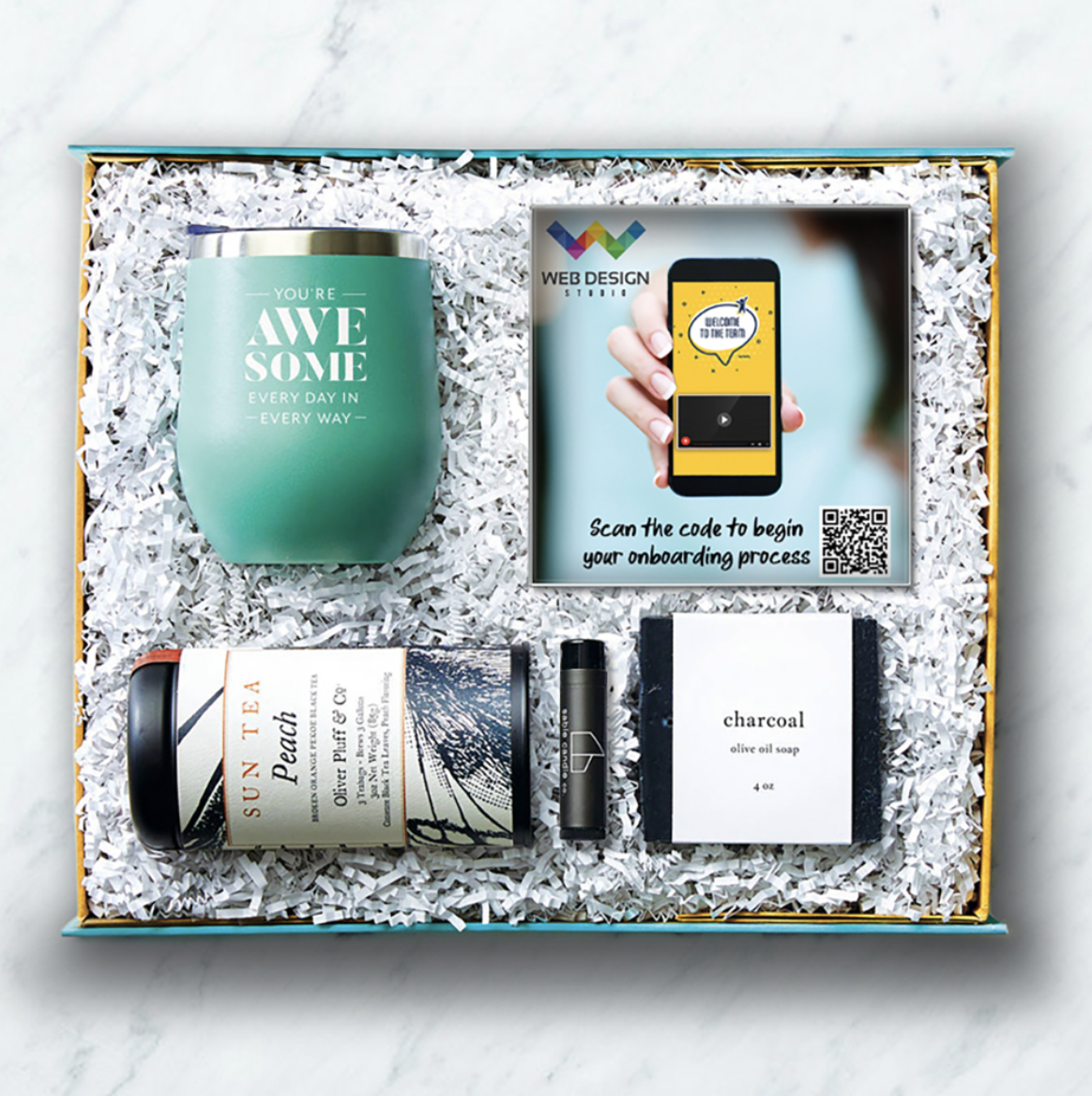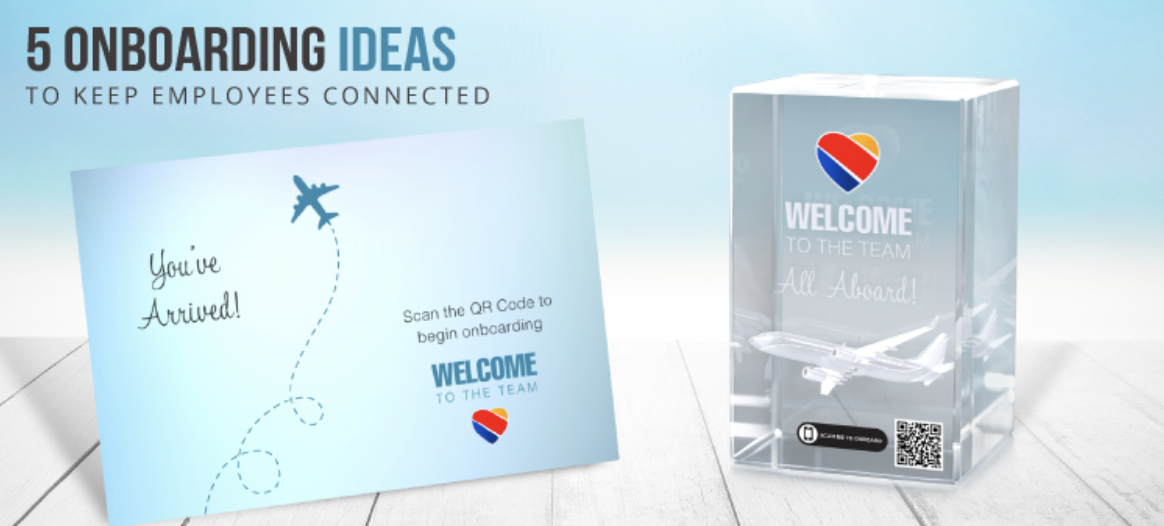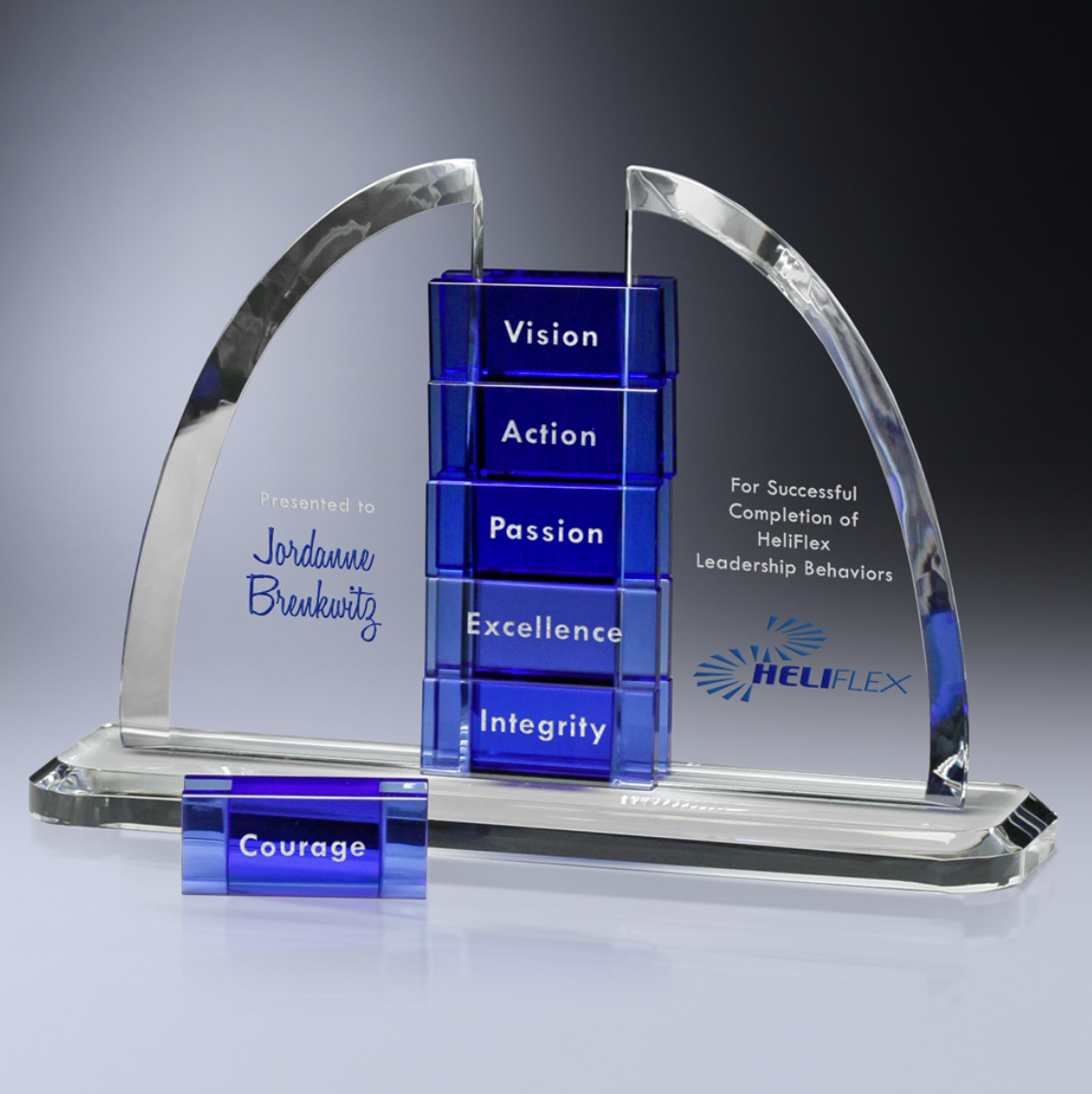Companies are faced with new challenges when it comes to hiring and retaining workers. Every industry needs to design and implement a thoughtful onboarding experience. Using a one-size-fits-all approach no longer works. It’s the difference between having a fully staffed company and one that is overworked and overburdened.
While this might seem like an impossible task, it’s best to remember the 64/4 rule. In the book “The 1-Page Marketing Plan,” Alan Dib writes, “64% of effects come from 4% of the causes … the majority of your success comes from 4% of your actions.” It doesn’t take much to create an amazing experience for your customers looking for ways to successfully onboard new employees.
Here are five ideas we are seeing regarding employee onboarding trends.
1. Personalization and Pre-Boarding
Companies are thinking ahead when it comes to new hires. Before an employee starts the job, companies can WOW new employees with a personal touch that introduces them to the company and its culture. One idea is to create a 3D cube that includes the company logo and a QR code. The employee scans the code with their smartphone, and it directs them to any landing page your customer chooses.
Other elements to include with this idea:
- Personalized message on a postcard included with the 3D gift package
- Website copy that includes the employee name and new job title
- A video from the team welcoming them aboard
- A laser imprinted message on the gift box
Even before an employee steps foot in the door, a company can impress them with a memorable experience. Adding personalized and creative messages from their team can leave a lasting impression.
2. Supporting New Hires in the First Week
When a new employee starts working at a company, it is important to make the first few weeks as stress-free as possible. Onboarding always includes a variety of paperwork, learning new technology and job duties, and understanding the history and culture of the company.
Another effective way to use a QR code is with an onboarding kit. The QR code can direct the new hire to a company’s onboarding software or any link that allows them to access the needed onboarding forms. In addition, a library of onboarding videos is an efficient way for new hires to learn at their own pace. This onboarding idea is especially helpful for remote workers who might get lost in the new hire process.

A company can encourage loyalty and engagement by creating a step-by-step process that is easy to follow and creates a positive experience for employees. Companies can develop an emotional connection by thinking through every touchpoint along the way. Instead of handing a new employee a folder of forms to complete, automate the process with the QR code printed on a crystal photo gift with your team, company photo or brand. Not only does it help the new hire, but it also keeps the company top of mind.
3. Feel like a Team from the Start
Employees can feel like they are a part of the team right away with a few simple touches. During onboarding, long-time employees tell their stories to new hires, highlighting internal promotions and job transfers. Using a timeline of events, employees can visualize how they fit in their current role and department. As new employees get to know their co-workers through stories and examples, they’ll begin to trust and envision a future with the company.
In addition, companies can create a mentor program where new hires pair up with employees that have been there for a couple of years. The mentor can answer questions, introduce the new hire to the culture, and promote a team atmosphere. Leaders can encourage new hires to use the mentor as a resource when they are unsure or need a little guidance.
Organizations can promote the company and team culture with the following promotional ideas:
- T-shirts and sweatshirts
- Backpacks and bags
- Hats
- Water bottles
- Coffee Mugs
- Pens and notebooks
- Candies and food items
- iPhone holders
- Lighted USB Drive
- Golf balls
- Lip balms and lotions
- Don’t forget to brand the items so your company logo stands out!

4. Visualize the Future
What about connecting with employees long-term? Businesses focused on educational and career growth for employees will retain their new talent. New employees wonder if they will have long-term success at a company. They watch and learn how people treat each other and if the company has growth potential. Workers also want to feel connected and know they made the right choice.
The challenge for companies isn’t just what happens in the workplace but also what happens when employees leave work and engage in their social circles.
Harvard Business Review (HBR) found that people tend to reflect on leaving their job during milestones such as work anniversaries. Interestingly, mid-life birthdays, such as turning 40 or 50, resulted in a similar reaction. HBR noted that job hunting jumps 16% after employees attend a class reunion. An employee assesses their career and compares it to the work experiences in their social circles, which leads to exploring a job change.
What can companies do to combat this challenge? During the onboarding process, long-time employees can tell their stories that highlight internal promotions and job transfers. Using a timeline of events, employees can visualize how the culture promotes from within. As the employee gets to know their co-workers through their success stories, they will begin to trust the company with their future as well.
A company can also boost retention by recognizing its employees with awards and celebrations. Recognition awards honor employees that have displayed company values through hard work and dedication. Years of service, sales achievements, and other outstanding accomplishments are great ways to acknowledge employees’ efforts and encourage them to continue at the company.

5. Continuous Onboarding
According to HBR, most companies set 30, 60 or 90 days as the length of their onboarding process. The first 45 days of employment are when companies see turnover at a rate of 20%. Successful companies are ones that onboard for the first year of employment.
HBR suggests that companies set three-, six-, nine- and 12-month goals. Setting goals at each step shows the employee that the company is trustworthy and cares about their success.
A great way for managers to reward success symbolically is with the Goal Setter Award. While this award is a great way to commemorate years of service, employers can use it to acknowledge incremental milestones such as sales achievements, values, and cumulative gains. A company can include personalized messaging as a creative way to build momentum that connects employees to the work they do every day. Employees will feel appreciated and have beautiful reminders that will stay with them for years to come.
Conclusion
Onboarding requires some planning and organization, but the time spent now will pay off in the future. A successful onboarding program creates employees that love the culture, want to contribute, and rave to friends and family about their work and the connected culture. With our free virtuals and sales tools, our team goes the extra mile to help you present these ideas to your customers. By leveraging our team of memory makers, you can impact your customers in a significant way.



